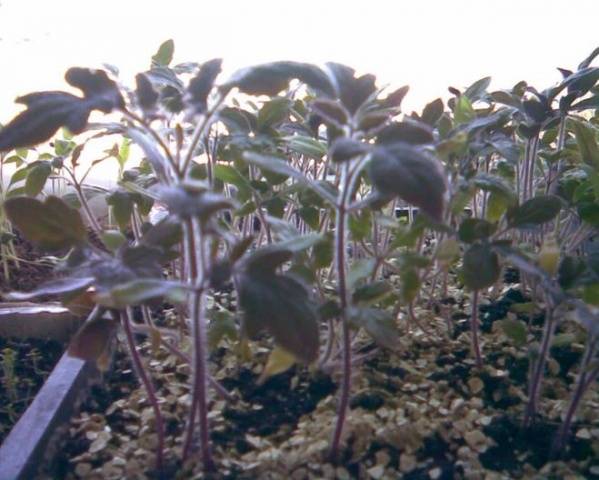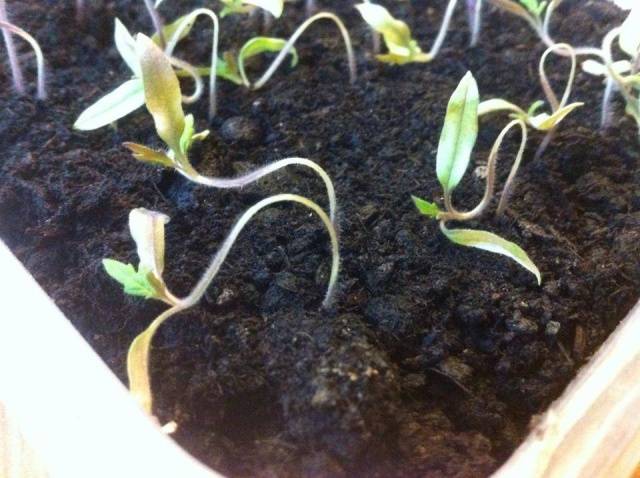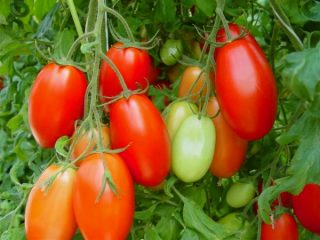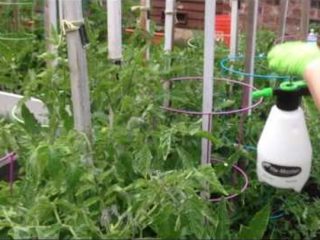Content
Probably, tomatoes are those vegetables, the disappearance of which from our diet we simply cannot imagine. In the summer we eat them fresh, fry, cook, simmer when preparing various dishes, make preparations for the winter. One of the most delicious and healthy juices is tomato juice. Tomatoes contain vitamins, biologically active substances, they are shown in the diet for weight loss and depression. If there are no contraindications, they are advised to be included in the diet for very elderly people. In addition, they can be grown on any site in almost any climatic zone - the benefit of varieties and hybrids is apparently invisible. Today we will answer the question that is asked very often: "Why are tomato seedlings purple?"
What you need to successfully grow tomatoes
Let's first find out what tomatoes love and what they don't like, because their successful cultivation depends on how well we take care of them. After all, the homeland of tomatoes is not only that there is another continent, a completely different climatic zone, they are used to a hot and dry climate. In our conditions, tomatoes grow exclusively thanks to the efforts of breeders and our efforts.
So, tomatoes are preferred:
- Moderately fertile water and air permeable soil with a slightly acidic or neutral reaction;
- Bright sun;
- Airing;
- Moderate uniform watering;
- Dry air;
- Warmly;
- Increased doses of phosphorus.
Tomatoes react negatively to the following:
- Heavy loam and acidic soils;
- Fresh manure;
- Thickened planting;
- Stagnant air (poor ventilation);
- Wet air;
- Excess nitrogen;
- Temperatures above 36 degrees;
- Uneven watering and waterlogging of the soil;
- Excess mineral fertilizers;
- Prolonged cold snap below 14 degrees.
Reasons why tomato seedlings can turn purple
Sometimes tomato seedlings turn purple, and different varieties growing in the same box can be colored differently. Tomatoes can become completely purple, only the leg can be colored, but most often the underside of the leaves turns blue.
Actually, the blue color of tomato leaves signals a lack of phosphorus. But before giving additional feeding, let's take a closer look at the causes of phosphorus starvation. After all, tomatoes do not like an excess of mineral fertilizers, as noted above. And seedlings are not even a full-fledged plant, they are very vulnerable to any mistake.
If you put a thermometer next to the tomato seedlings, and it shows a higher temperature, this is not a reason to calm down. The thermometer shows the air temperature, the soil temperature is lower. If the box with tomato seedlings is close to the cold window glass, this may be the problem.
How to help if tomato seedlings turn purple
If the leaves of the tomatoes, in addition to being colored purple, are also raised up, then the reason is precisely the low temperature. You can install foil between the window sill and the box with tomato seedlings - it will protect from the cold and provide additional lighting. If this does not help, move the box with tomato seedlings to a warmer place and light up to 12 hours a day using a fluorescent lamp or phytolamp. After a while, tomato seedlings will acquire their usual green color without any additional feeding.
But if the temperature of the content of tomatoes is deliberately higher than 15 degrees, then it really is a lack of phosphorus. Spraying a superphosphate extract over the leaf can help quickly and effectively. To do this, pour a tablespoon of superphosphate with a cup (150 g) of boiling water, let it brew for 8-10 hours. After that, dissolve in 2 liters of water, spray and water the seedlings.
Another reason contributing to poor absorption of phosphorus can be, oddly enough, backlighting.
During the day, even in cloudy weather, the plant standing by the window receives a certain dose of ultraviolet radiation. At night, you can only highlight those tomatoes that receive exclusively artificial lighting, and strictly for 12 hours, and not around the clock.
Any plant must have a dormant period. It is at night time that tomatoes assimilate and process nutrients accumulated during the day.
How to make tomato seedlings more resistant
As you know, strong plants are more resistant to negative factors. This is very important for tomato seedlings.
Even at the stage of preparing tomato seeds for planting, soak them well in an epin solution. Epin is a highly effective bioregulator and stimulant that helps the plant to safely survive the factors that cause stress - including hypothermia.
It is very good to water tomato seedlings not with water, but with a weak solution of humate. For some reason, manufacturers rarely write how to properly dissolve it. It is done like this: pour a teaspoon of humate into a metal saucepan or mug, pour boiling water over it. Shake the resulting black foaming liquid and add up to 2 liters of cold water. When watering tomato seedlings, a weak solution is needed - mix 100 g of solution with 1 liter of water. The solution can be stored indefinitely.
You might be interested in watching a short video about the 5 most common mistakes when growing tomatoes:













